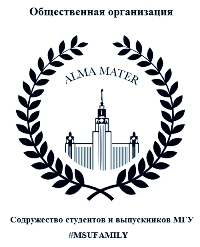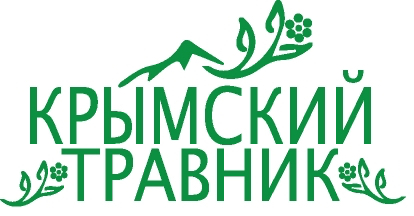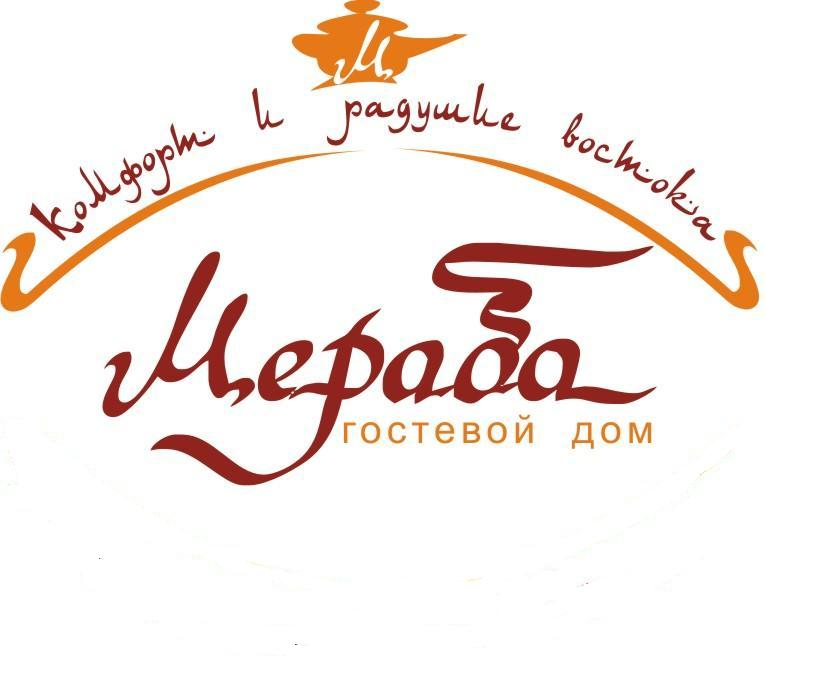МОЛОДЁЖНЫЙ ПРОЕКТ ДЛЯ ТЕХ, КТО ДЕЛАЕТ ПЕРВЫЕ ШАГИ В НАУКЕ
/components/bitrix/system.auth.form/auth_alm/images/login.gif) Войти
Войти /components/bitrix/system.auth.form/auth_alm/images/register.gif) Регистрация
Регистрация
Войти в корпоративную почту как автор/член редколлегии/рецензент журнала




2016. Том 11. Выпуск 1. Система планета Земля / 'The Earth Planet System / System Planet Erde
МЕТОДЫ — АНАЛИЗЫ — СТАНДАРТЫ / METHODS — ANALYSIS — STANDARDS / METHODEN — ANALYSEN — NORMEN
Аксёнов В.И., Геворкян С.Г., Иоспа А.В., Кривов Д.Н., Шмелёв И.В.
Работа винтовых свай в мёрзлых грунтах
Аксёнов Виктор Иванович, кандидат технических наук, старший научный сотрудник, главный специалист Сектора испытаний мёрзлых грунтов ОАО «Фундаментпроект»  ORCID 0000-0001-5971-6976
ORCID 0000-0001-5971-6976
E-mail: simg@fundamentroekt.ru, viktor-i-aksenov@j-spacetime.com
Геворкян Сергей Георгиевич, кандидат физико-математических наук, старший научный сотрудник, ведущий инженер Сектора испытаний мёрзлых грунтов ОАО «Фундаментпроект»  ORCID 0000-0002-7701-6209
ORCID 0000-0002-7701-6209
E-mail: simg@fundamentroekt.ru, sergey-g-gevorkyan@j-spacetime.com
Иоспа Андрей Викторович, начальник Сектора испытаний мёрзлых грунтов ОАО «Фундаментпроект»  ORCID 0000-0002-6644-9121
ORCID 0000-0002-6644-9121
E-mail: simg@fundamentroekt.ru, andrey-v-iospa@j-spacetime.com
Кривов Денис Николаевич, кандидат геолого-минералогических наук, руководитель группы Сектора испытаний мёрзлых грунтов ОАО «Фундаментпроект»  ORCID 0000-0002-0433-8119
ORCID 0000-0002-0433-8119
E-mail: simg@fundamentroekt.ru, denis-n-krivov@j-spacetime.com
Шмелёв Игорь Владимирович, инженер Сектора испытаний мёрзлых грунтов ОАО «Фундаментпроект»  ORCID 0000-0003-0088-6692
ORCID 0000-0003-0088-6692
E-mail: simg@fundamentroekt.ru, igor-v-shmelev@j-spacetime.com
В статье приводятся результаты лабораторных исследований на физических моделях работы винтовых свай в мёрзлых грунтах, проведённых в целях получения представлений о работе винтовых свай в натурных условиях.
Использование морозильных камер и специально изготовленного оборудования (модели сваек, силовая установка, средства измерения и т.п.) позволили успешно решить задачу по физическому моделированию работы винтовых свай в мёрзлых грунтах. Полученные результаты позволили уточнить методику расчета работы винтовых свай в мерзлых грунтах и предложить новую расчетную формулу, особенность которой состоит в том, что она не учитывает смерзание цилиндрической части сваи с грунтом. Анализ результатов испытаний натурных винтовых свай, доведенных до срыва, показал практическую приемлемость предложенной расчетной формулы.
Ключевые слова: винтовые сваи, мёрзлые грунты, физическое моделирование, сдвиг, сжатие, смерзание, строительство в криолитозоне.
Цитирование по ГОСТ Р 7.0.11—2011:
Аксёнов, В. И., Геворкян, С. Г., Иоспа, А. В., Кривов, Д. Н., Шмелёв, И. В. Работа винтовых свай в мёрзлых грунтах [Электронный ресурс] / В.И. Аксёнов, С.Г. Геворкян, А.В. Иоспа, Д.Н. Кривов, И.В. Шмелёв // Электронное научное издание Альманах Пространство и Время. — 2016. — Т. 11. — Вып. 1: Система планета Земля. — Стационарный сетевой адрес: 2227-9490e-aprovr_e-ast11-1.2016.73.
Aksenov V.I., Gevorkyan S.G., Iospa A.V., Krivov D.N., Shmelev I.V.
The Work of Screw Piles into Frozen Soils
Viktor I. Aksenov, Sc.D. (Engineering), Senior Researcher, Chief Specialist at FOUNDAMENTPROJEKT OJSC (Moscow)  ORCID 0000-0001-5971-6976
ORCID 0000-0001-5971-6976
E-mail: simg@fundamentroekt.ru, viktor-i-aksenov@j-spacetime.com
Sergey G. Gevorkyan, Sc.D. (Physics and Mathematics), Senior Researcher, Leading Engineer at FOUNDAMENTPROJEKT OJSC (Moscow)  ORCID 0000-0002-7701-6209
ORCID 0000-0002-7701-6209
E-mail: simg@fundamentroekt.ru, sergey-g-gevorkyan@j-spacetime.com
Andrey V. Iospa, M.Eng., Head of Frozen Soils Tests Sector at FOUNDAMENTPROJEKT OJSC (Moscow)  ORCID 0000-0002-6644-9121
ORCID 0000-0002-6644-9121
E-mail: simg@fundamentroekt.ru, andrey-v-iospa@j-spacetime.com
Denis N. Krivov, Sc.D (Geology and Mineralogy), Head of Group at Frozen Soils Tests Sector, FOUNDAMENTPROJEKT OJSC (Moscow)  ORCID 0000-0002-0433-8119
ORCID 0000-0002-0433-8119
E-mail: simg@fundamentroekt.ru, denis-n-krivov@j-spacetime.com
Igor V. Shmelev, M.Eng., Engineer at FOUNDAMENTPROJEKT OJSC (Moscow)  ORCID 0000-0003-0088-6692
ORCID 0000-0003-0088-6692
E-mail: simg@fundamentroekt.ru, igor-v-shmelev@j-spacetime.com
There are various methods of pile foundations, as by way of devices and by design features. According to the method of device, piles may be hammered, screwed, drill-hammered, drill-injected. Depending on the material, piles may be concrete or metal. Depending on their design features, piles may be smooth, with extended fifth, with the broadening along the entire length, and screw.
Currently screw piles are widely used in the areas of distribution of snowmelt and frozen soils, in various fields of construction.
Screw pile is a cylindrical pile with helical projections (lobes) at its lower end. Screw piles are a relatively new but promising design for their application in the territories of the permafrost. They have a number of significant advantages compared to conventional prismatic and cylindrical hanging piles and piles-racks:
(i) universality for the different soils;
(ii) greater speed of construction of foundations in difficult climatic and cramped conditions;
(iii) successful operation under alternating loads, and also in conditions of frost heaving of soils;
(iv) high accuracy of the installation;
(v) bumpless immersion in the soil, ensuring the safety of underground utilities and surface structures, etc.;
(vi) absence of wet processes in the production of works.
In our paper, we discuss the results of laboratory researches on physical models of the work of screw piles into frozen soils. The aim of our study was obtaining results of experiments with models to get the necessary answers to questions about the work of screw piles in natural conditions.
The use of freezers and specially made equipment (model screw piles, the test facility, measurement tools, etc.) allowed us to solve successfully the problem on physical modeling of work of screw piles into frozen soils. The results of these tests show that under other equal conditions (composition of the soil, moisture, density, etc.) wherein the length of the ‘feathered’ parts of the screw piles increase 2 times, in this case carrying capacity of screw piles increases of approximately 40÷50%.
Analysis of the curves describing soil deformation under pressing model screw piles showed that deformation of frozen soil grows exponentially during the stress application to the screw pile load by the equal degrees. This means that frozen soil behaves like Voigt’s environment during the interaction with screw pile. A characteristic feature of the Voigt’s environment is that developing it under the action of compression stresses the total deformation ε has two components: deformation of compression and deformation of viscous flow.
The results of our research have confirmed the fact of formation of the compacted soil cores under the heel of the screw piles. Accounting compressed kernel allows you to calculate the surface area of the shift during the definition of bearing ability of screw piles.
The results of our study helped to clarify the methods of calculating the work of screw piles into frozen soils and to offer a new calculation formula. The distinctive feature of this formula is that it does not take account the freezing of the cylindrical part of the pile with the ground. Analysis of the results of field tests of full-scale screw piles driven to collapse, showed practical acceptability of the proposed formula.
Keywords: screw piles, frozen soil, physical modeling, shear, compression, freezing, construction in permafrost.
Cite MLA 7:
Aksenov, V. I., S. G. Gevorkyan, A. V. Iospa, D. N. Krivov, and I. V. Shmelev. "The Work of Screw Piles into Frozen Soils." Electronic Scientific Edition Almanac Space and Time 11.1(‘The Earth Planet System’) (2016). Web. <2227-9490e-aprovr_e-ast11-1.2016.73>. (In Russian).
Список литературы / References
Литература
ГОСТ 5686-94 Грунты. «Методы полевых испытаний сваями» М. МНТКС, 1996. 56 с.
СНиП 2.02.04-88. Основания и фундаменты на вечномерзлых грунтах. М.: ЦИТП Госстроя СССР, 1990. 51 с.
Свод правил СП 25.13330.2012. Основания и фундаменты на вечномерзлых грунтах. Актуализированная редакция СНиП 2.02.04-88. М.: Минрегион России, 2012. 110 с.
Аксёнов В.И., Геворкян С.Г., Иоспа А.В., Кривов Д.Н., Шмелёв И.В., Спиридонов С.И. Особенности работы винтовых свай в мёрзлых грунтах // Основания, фундаменты и механика грунтов. 2014. № 4. С. 2—8.
Железков В.Н. Винтовые сваи в энергетической и других отраслях строительства. СПб.: Прагма, 2004. 150 с.
Гончаров Ю.М., Таргулян Ю.О., Вартанов С.Х. Производство свайных работ на вечномерзлых грунтах. Л.: Стройиздат, 1981. 160 с.
Зеленин А.Н. Основы разрушения грунтов механическими способами. М.: Машиностроение, 1968. 376 с.
Крутиков И.В., Колчанов И.В., Осокин А.Б., Смолов Г.К., Рябов В.А., Аксенов В.И., Кривов Д.Н., Спиридонов С.И. Использование винтовых свай при строительстве газопромысловых объектов на Бованенковском НГКМ // Газовая промышленность. 2012. № 1 (660). С. 45—50.
Малинин Н.Н. Прикладная теория пластичности и ползучести. М.: Машиностроение,1975. 400 с.
Нормы проектирования фундаментов из винтовых свай № 20007ТМ. Т. 1. Кн. 1. СПб.: СевЗапНТЦ, 2007. 53 с.
Руководство по проектированию и устройству фундаментов мачт и башен линий связи из винтовых свай. М.: Стройиздат, 1965. 40 с.
Руководство по проектированию оснований и фундаментов на вечномерзлых грунтах. М.: Стройиздат, 1980. 303 с.
Руководство по эффективным способам устройства свайных фундаментов на вечномерзлых грунтах в нефтегазовом строительстве. М.: НИИОСП им Н.М.Герсеванова, ИКЦ ПФ, 2005. 166 с.
Седов Л.И. Механика сплошной среды. Т. 1. М.: Наука, 1973. 536 с.
Цытович Н.А. Механика грунтов. М.: Высшая школа, 1979. 448 с.
References
Aksenov V.I., Gevorkyan S.G., Iospa A.V., Krivov D.N., Shmelev I.V., Spiridonov S.I. "Features of the Work of Screw Piles into the Frozen Soils." Soil Mechanics and Foundation Engineering 4 (2014): 25—30. (In Russian).
Code of Rules SP 25.13330.2012. Bases and Foundations on the Permafrost. Updated Edition of the SNiP 2.02.04-88. Moscow: Ministry of Regional Development Publisher, 2012. 110 p. (In Russian).
Construction Standards and Rules SNiP 2.02.04-88. Bases and Foundations on the Permafrost. Moscow: USSR Gosstroy Publisher, 1990. 51 p. (In Russian).
Goncharov Yu.M., Targulyan Yu.O., Vartanov S.Kh. Execution of the Pile's Works on the Permafrost. Leningrad: Stroyizdat Publisher, 1981. 160 p. (In Russian).
Krutikov I.V., Kolchanov I.V., Osokin A.B., Smolov G.K., Ryabov V.A., Aksenov V.I., Krivov D.N., Spiridonov S.I. "The Use of Screw Piles in the Construction of Field Facilities at the Bovanenkovo Oil and Gas Condensate Field." Gas Industry 1 (2012): 45—50. (In Russian).
Malinin N.N. Applied Theory of Plasticity and Creep. Moscow: Mashinostroenie Publisher, 1975. 400 p. (In Russian).
Manual on Design and Construction of Foundations of Masts and Towers of Communication Lines on the Screw Piles. Moscow: Stroyizdat Publisher, 1965, 40 p. (In Russian).
Manual on Design of Bases and Foundations in Permafrost Soils. Moscow: Stroyizdat Publisher, 1980, 303 p. (In Russian).
Manual on Effective Ways of Construction of Pile Foundations on Permafrost Soils in Oil and Gas Industry. Moscow: N.M. Gersevanov Scientific Research Institute for Foundations and Underground Structures Publisher, 2005, 166 p. (In Russian).
Sedov L.I. Mechanics of Continuous Media. Moscow: Nauka Publisher, 1973, volume 1. 536 p. (In Russian).
Standards for the Design of the Foundations of Screw Piles no. 20007TM. St. Petersburg: SevZapNTTs Publisher, 2007, volume 1, book 1. 53 p. (In Russian).
State Standard GOST 5686-94. Soils. Methods of Field Tests by the Piles. Moscow: USSR Gosstroy Publisher, 1996, 56 p. (In Russian).
Tsytovich N.A. Soil Mechanics. Moscow: Vysshaya shkola Publisher, 1979. 448 p. (In Russian).
Zelenin A.N. Fundamentals of the Mechanical Ways of the Soils Destruction. Moscow: Mashinostroenie Publisher, 1968. 376 p. (In Russian).
Zhelezkov V.N. Screw Piles in Energetic and Other Sectors of the Construction. St. Petersburg: Pragma Publisher, 2004. 150 p. (In Russian).
Читать статью / Read more












